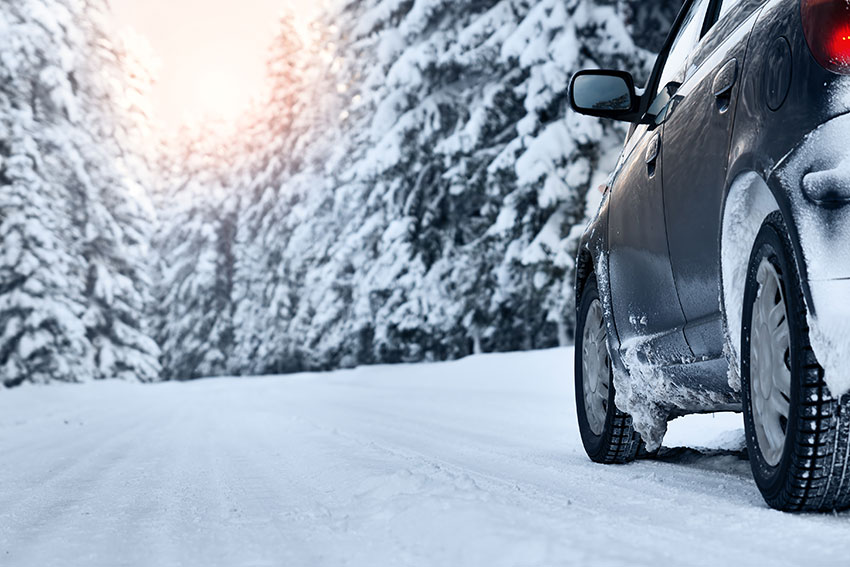
Tyre skid marks in the snow

Tyre skid marks in the snow
In winter, with colder temperatures and more challenging conditions on the roads, it's more important than ever to look after your tyres and make sure that they’re safe. If you’re going to be regularly driving in the harshest climates you might also consider snow socks, snow chains or winter tyres in order to prepare your car for a change in conditions.

While the legal minimum tyre tread depth is 1.6mm, it’s recommended that it should be at least 3mm. Below this depth, braking distances increase significantly; something you don’t want to contend with in icy conditions.
Don’t assume that reducing your tyre pressure will give you more traction – it will just reduce your stability. Keep your tyre pressure topped up to the manufacturer recommended levels. It may be worthwhile investing in a foot pump or electric air compressor so you can top up to the right levels before setting off on a long journey.
Winter tyres, also known as cold weather tyres, have a different tread pattern and a higher level of silica, meaning they are less likely to harden at lower temperatures, giving you a better grip on the road. Get these fitted as soon as the cold conditions arrive – but ensure you get them removed once winter is over, as they won’t provide the same safety performance as standard tyres on dry and wet roads. Winter tyres can be identified by the distinctive Alpine symbol, which looks like a snowflake on a mountain.
Countries across Europe have different rules regarding the use of snow chains and winter tyres, so be sure to research the regulations before you make your trip.
When winter tyres aren’t enough, snow socks can be used to improve grip. They are made of a strong fabric that goes over standard tyres and they can be easily stored away during summer months. They are cheaper to buy than snow chains, but must be washed regularly to avoid dirt and salt damage. Snow socks must be removed on a cleared road surface, or your tyres won’t comply with the minimum legal tread depth.
 Snow chains are devices that can be fitted to tyres to increase their width in order to improve traction. They are sold in pairs and are generally only fitted over the drive wheels. Snow chains are not universal so you need to get the right chains to fit the dimensions of your tyres and power of your car. Before taking them out on the roads, you must check that your car can cope with snow chains, as they can affect suspension and braking. Chains will only be necessary in very heavy snow, where roads haven’t been cleared. By law, they must be removed on roads where there is no snow.
Snow chains are devices that can be fitted to tyres to increase their width in order to improve traction. They are sold in pairs and are generally only fitted over the drive wheels. Snow chains are not universal so you need to get the right chains to fit the dimensions of your tyres and power of your car. Before taking them out on the roads, you must check that your car can cope with snow chains, as they can affect suspension and braking. Chains will only be necessary in very heavy snow, where roads haven’t been cleared. By law, they must be removed on roads where there is no snow.
Snow chains are a legal requirement on European mountain roads and roadside checks are regularly carried out to ensure drivers are properly equipped for all weather conditions.
Both snow chains and snow socks restrict your maximum speed and you should not exceed 30 miles per hour when these are fitted on your car.